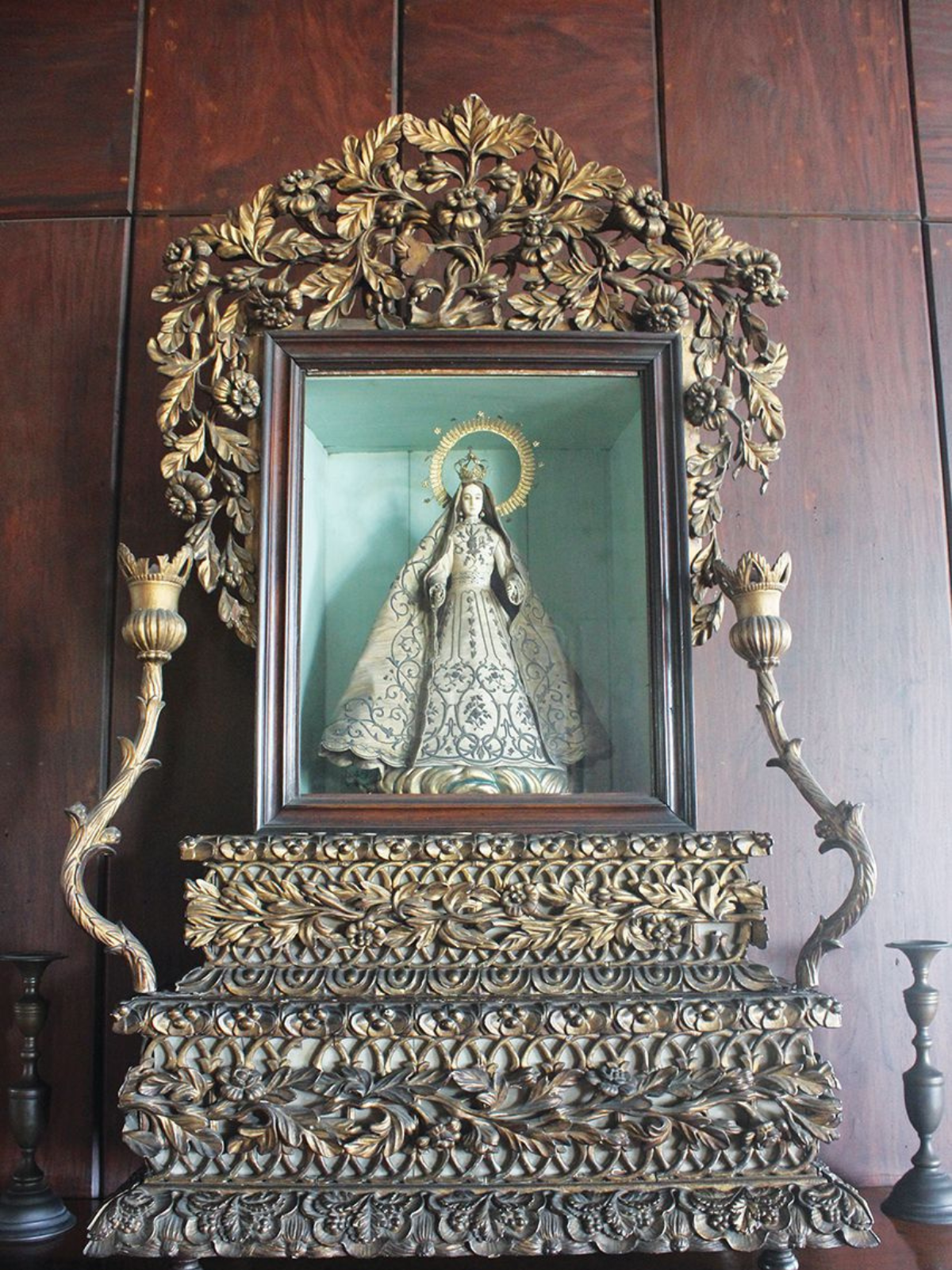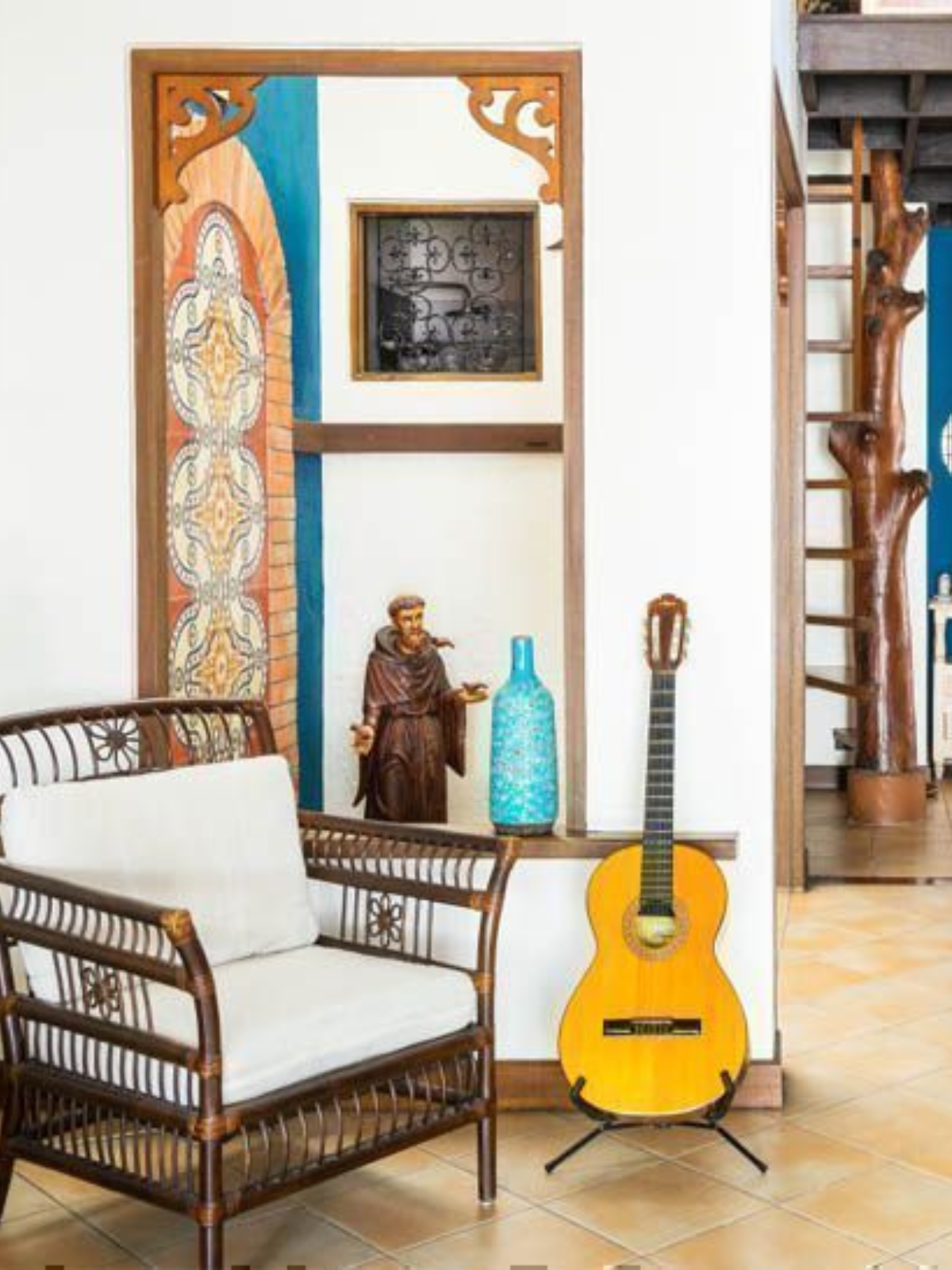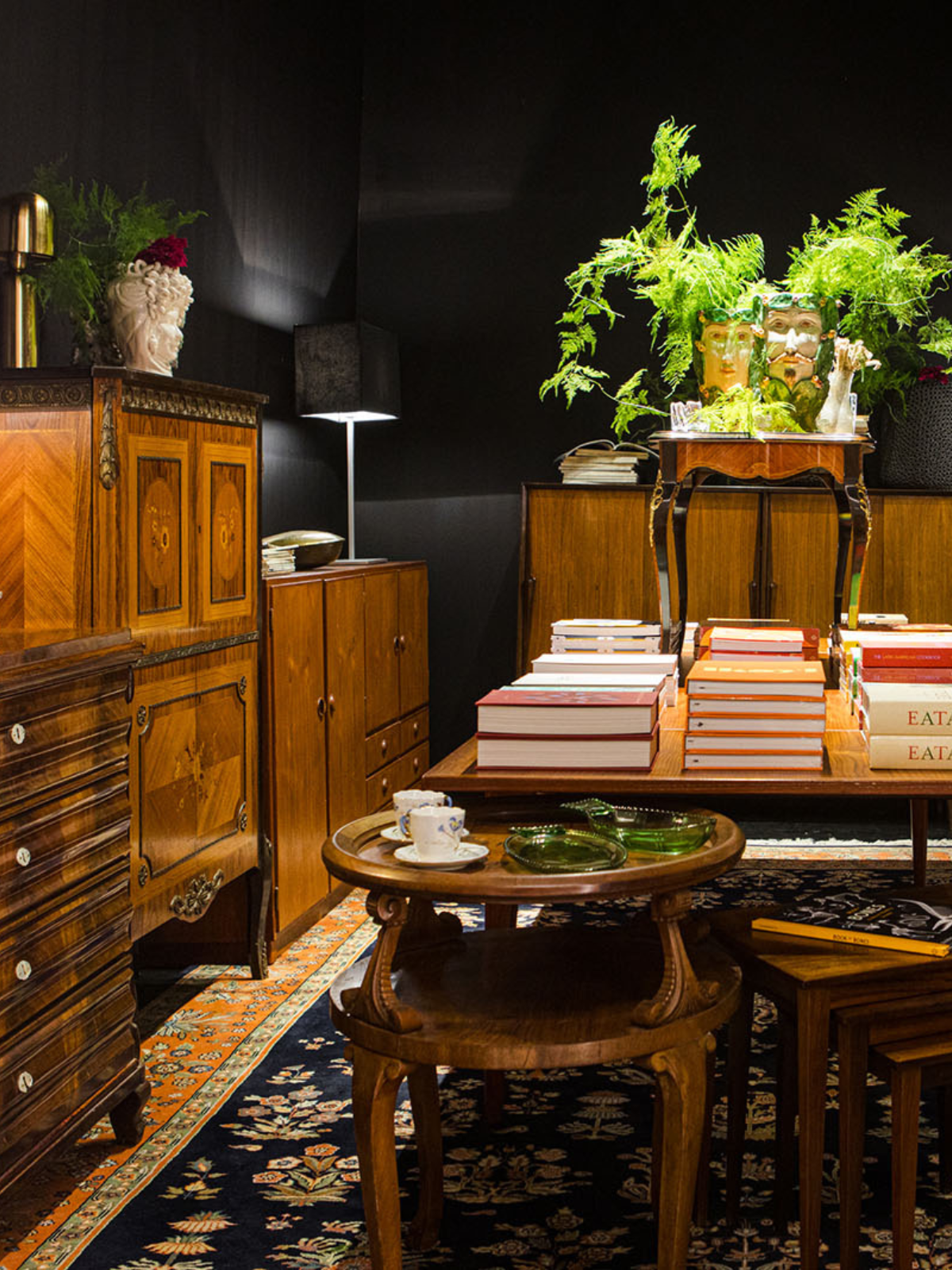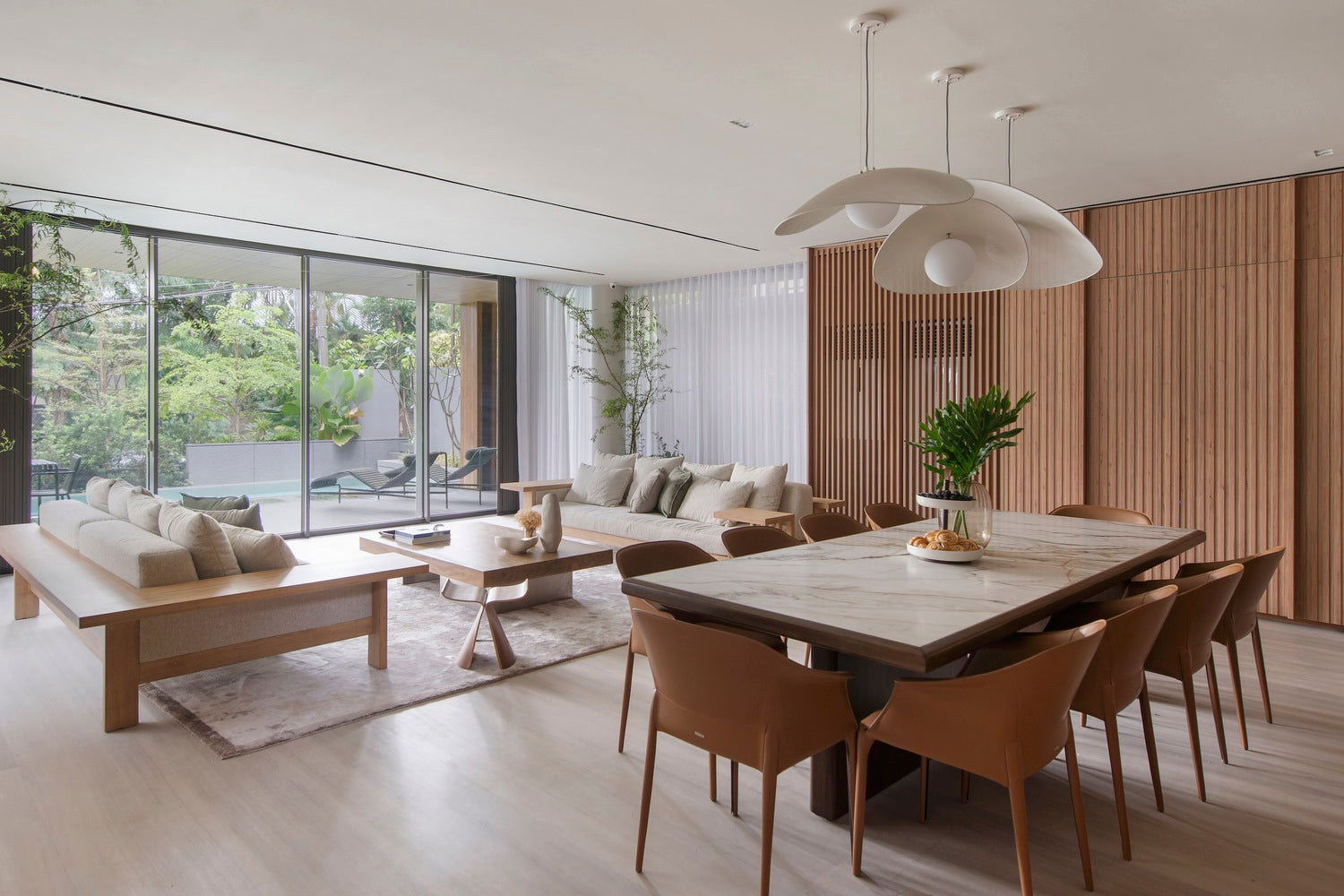Interior Design Style that is Uniquely Filipino
This blog post was last updated on December 12, 2023.
Interior design styles come in different shapes, forms, and functions. From a deeper perspective, the types of our home's interior spaces also differ based on cultures and locations.
It's an honor for me as a designer who grew up in the Philippines to experience living in a home that embodies Filipino culture and traditions.
 Part of the cover image via Unsplash
Part of the cover image via Unsplash
In celebration of the annual Fiesta Filipino event in Calgary, it would be fitting to create a blog about interior design styles that are uniquely Filipino.
Similar to other countries, the architectural styles of houses in the Philippines have evolved over time. The indigenous population used to live in nipa huts or Bahay Kubo. Later during the Spanish occupation, the Stone Houses or Bahay na Bato became popular. And now, modern houses have taken over.
One thing stays the same: most homes in the Philippines are designed for the most fundamental unit of the community- the family.
Despite the changes in interior design styles, does our home still have a distinct Filipino identity?
Vernacular Architecture
 Image via Unna Interior Design Studio
Image via Unna Interior Design Studio
The "Bahay Kubo" houses in the Philippines are prime examples of vernacular architecture. These structures are built by local carpenters using construction materials that are commonly found in the area.
In many provinces across the country, it is a customary practice for the entire community to come together and lend a helping hand to construct a house. The men take charge of all the heavy lifting and construction work, while the women prepare and cook food for everyone involved.
When I was a child, I remember how our community used to gather together to build traditional houses or move existing homes to new locations. This practice is called "Bayanihan". I recall that it felt like a big celebration with lots of food and drinks, and everyone was happy to help each other build the house.
Architects and designers in younger generations are modernizing country homes. However, the use of new technologies to build homes faster and more efficiently is leading to the loss of traditional Filipino values, particularly the "Bayanihan" spirit.
It's unfortunate that change is inevitable, but it's essential for us to adapt for better living. However, the spirit of helping one another, which was inherited from our traditional "Bayanihan," is still evident in the community. People still volunteer at events and contribute to town improvements to continue this spirit of cooperation.
Home Altar
 Image via Tatler Asia
Image via Tatler Asia
Filipino-style homes are known for their homemade altars. These altars can take the form of a piece of furniture or a wall-hung shelf, on which holy pictures, statues, relics, and candles are placed. Usually, the altar is located in the center of the living area or sometimes on the staircase, with enough space for the family to kneel and pray.
Get your interior style on point with the latest design tips, trends, and recommended home goodies - delivered straight from the expert! Sign up for our newsletter by entering your email below!
October is celebrated as the Holy Rosary Month. In this month, the community brings the statue of Mother Mary to different houses and prays the rosary every night.
This tradition is still being practiced these days, and I was lucky enough to be a part of it when I was a child. Therefore, when designing a house in the Philippines, one important factor to consider is the location of the altar.
Prosperity & Good Energy from Feng Shui
 Image via Tatler Asia
Image via Tatler Asia
It is not surprising that many Filipinos, especially those with Chinese ancestry, have adopted the practice of Feng Shui in their homes. When applied correctly, this Chinese tradition is believed to bring good luck and prevent bad luck from entering the household.
I don't strictly follow Feng Shui because my focus is on designing spaces that meet the needs of users. However, I do sometimes incorporate certain non-traditional aspects of the tradition, such as positioning door openings correctly and placing water features and indoor plants in suitable locations."
Following Feng Shui principles can help create an organized, clean, comfortable, and relaxing home, in addition to promoting good energy and prosperity.
If you're interested in practicing Feng Shui, it's best to read books about it or hire an expert. Following the tradition based on hearsay could cause more harm than good, especially to your wallet. So, be careful and make informed decisions.
Pamana or Heirloom
 Image via Real Living
Image via Real Living
Like other cultures, Filipinos cherish items with great sentimental value, especially those handed down through generations within the family.
Many of us keep and display various items in our homes, such as furniture, home décor, artwork, or memorabilia. Sometimes, even if the item is no longer functional, we will attempt to fix it and make it work because we cannot imagine letting go of it.
Blogs that might pique your interest:
How to Make a Rental Living Room Feel Like your Own?
7 Most Innovative Products for Home Design- Interior Designer's Reviews
9 Best Color Green Finishes to Use in Any Room
9 Best Color Black Finishes to Use in Any Rooms
In the house where I grew up, I remember some big wooden chest where we kept all documents and school awards. I also remember that we repurposed an old sewing machine as a display table.
Keeping sentimental items preserves memories and adds personal meaning to a space.
Natural Materials
 Image via Vogue Philippines
Image via Vogue Philippines
The Philippines, as a tropical country, boasts an abundance of natural materials such as wood, rattan, and bamboo, which are commonly used in traditional and modern house construction throughout the nation.
These materials serve as structural supports, for walls, floors, and roofs. They are also used for furniture, cabinets, home decor, and even dinnerware.
Capiz shells, also known as windowpane oysters, are a type of mollusk native to the waters surrounding southeast Asian countries such as the Philippines and Indonesia. These shells are characterized by their translucent appearance, which allows for a delicate and ethereal glow when used in home décor.
In Filipino homes, Capiz shells are a popular material used for various decorative elements, such as lampshades, chandeliers, and wall art. The use of Capiz shells in home décor is a testament to the ingenuity and resourcefulness of Filipino artisans, who have been able to transform a natural material into a stunning and unique design element.
Capiz shells are strong and see-through, making them a great substitute for glass windows. They are also popular for home decor and handicrafts, and are often used to create decorative chandeliers and pendant lights for tropical and boho-style interiors.
Terrace
 Image via Vogue Philippines
Image via Vogue Philippines
Last but not least is the front terrace or covered patio. Aside from all the primary rooms in the house, the terrace is one of the most essential and used spaces in a Filipino home.
It provides additional living, snacking, and dining space, as well as the potential for future house expansion.
As a country with excellent summer weather all year round, the terrace is the best hangout space for families to enjoy coffee and snacks, and the perfect place to have friendly chats with neighbors (which we call "chismisan"). Additionally, during the holiday season, it is also where the most expensive Christmas decorations are displayed.
What makes an Interior Design Style Filipino?
 Image via ArchDaily
Image via ArchDaily
As an architect in the Philippines and a home designer in other parts of the world, I find Filipino interior design uniquely tropical. Our homes represent the sun's brightness and our forests' vibrancy.
It is as fresh as the morning sky and as relaxing as the sound of the beach. I always imagine a perfect Filipino house to be organic regarding finishes, flowy and open layout, and a soft and comfy interior vibe.
Some designers who want to adopt modern and Western styles in Filipino houses may not agree with me, but we already have everything in our country, including our colorful culture and environment.
We simply need to embrace what already exists and utilize it to create something beautiful, meaningful, and truly Filipino. For instance, I recently completed a space design project for a dining area, showcasing my interpretation and definition of Filipino interior design style.
The objective is to create a Filipino dining area that embodies the quintessential Filipino interior design style by incorporating the elements mentioned in this blog.



Thanks for checking out my blog. I'm here to share over fifteen years of design expertise (mainly interior design) through reviews, tips, inspiration, and DIY projects.
I hope you love it here as much as I love writing my blogs; feel free to drop a comment, email me at info@rocabudesigns.com, or join our newsletter for fresh blog updates.
Together, let's create meaningful and beautiful spaces.
Ron


